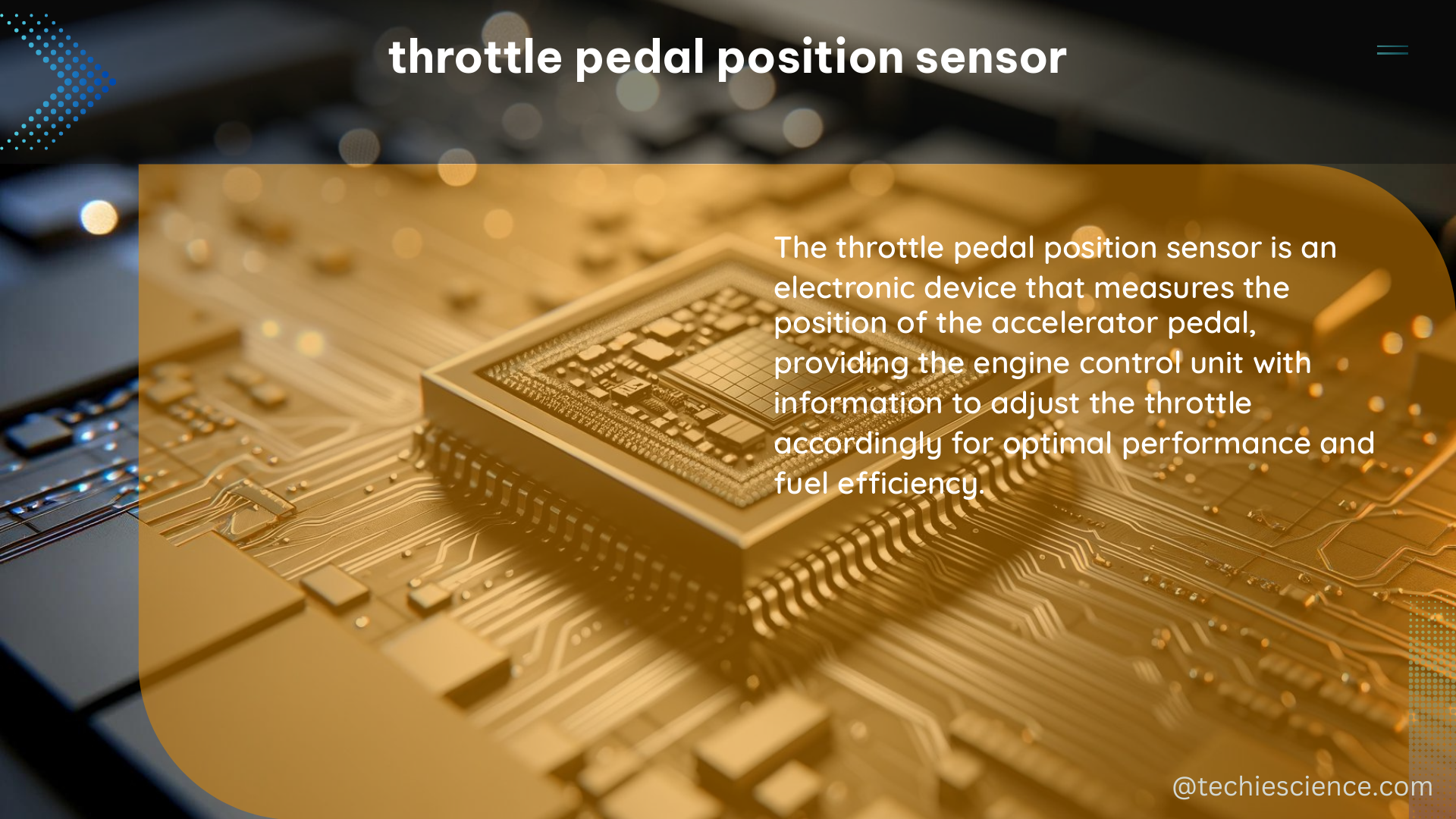The throttle pedal position sensor is a critical component in modern vehicles, responsible for accurately measuring the position of the throttle pedal and converting it into an electrical signal that the engine control unit (ECU) can use to precisely control the engine’s power output. This sensor plays a vital role in ensuring smooth, responsive, and efficient engine performance, making it a crucial element in the overall vehicle’s operation.
Understanding the Throttle Pedal Position Sensor
The throttle pedal position sensor is typically located near the throttle pedal and utilizes various technologies, such as potentiometers or Hall effect sensors, to measure the position of the pedal. The sensor’s design and positioning can vary depending on the make and model of the vehicle, but its primary function remains the same: to provide the ECU with real-time information about the driver’s throttle input.
Sensor Accuracy and Reliability
One of the most critical aspects of the throttle pedal position sensor is its accuracy and reliability. According to a study conducted by the Washington State Department of Ecology, the sensor should have a linearity error of no more than ±2% of the full scale and a hysteresis error of no more than ±1% of the full scale. These stringent specifications ensure that the sensor provides consistent and precise measurements of the throttle pedal position, even under varying driving conditions.
To achieve this level of accuracy, the sensor’s internal components, such as the potentiometer or Hall effect sensor, must be carefully calibrated and maintained. Manufacturers often employ advanced manufacturing techniques and quality control measures to ensure that each sensor meets or exceeds these performance standards.
Sensor Response Time
Another critical factor in the throttle pedal position sensor’s performance is its response time, which is the time it takes for the sensor to respond to changes in the throttle pedal position. A slower response time can result in delayed engine response and reduced vehicle performance, while a faster response time can improve engine responsiveness and driving dynamics.
According to a NATO STO report, the response time of a throttle position sensor should be less than 10 milliseconds for optimal performance. This rapid response is essential for providing the ECU with real-time information about the driver’s throttle input, allowing the engine to react quickly and efficiently to changes in driving conditions.
Technical Specifications

The throttle pedal position sensor typically has a voltage output that ranges from 0 to 5 volts, depending on the throttle pedal position. The sensor’s resistance also varies with the pedal position, typically ranging from a few ohms to several kilohms. The sensor’s power supply voltage can vary depending on the vehicle make and model, but it is typically in the range of 5 to 16 volts.
To ensure optimal performance, the sensor’s voltage output and resistance values must be within the specified ranges. Deviations from these values can indicate a problem with the sensor or the associated wiring and connectors.
Sensor Faults and Maintenance
When it comes to DIY maintenance and repair of the throttle pedal position sensor, it is essential to follow the vehicle manufacturer’s instructions and use high-quality replacement parts to ensure proper operation and longevity. According to a HELLA guide, common faults in the throttle pedal position sensor can include:
- Open or short circuits
- Damaged wiring or connectors
- Mechanical wear or damage
Regular inspection and maintenance of the sensor and its associated wiring and connectors can help prevent these faults and ensure optimal performance. This may include checking for proper sensor operation, inspecting the wiring for signs of damage, and ensuring that all connections are secure and free of corrosion.
In the event of a sensor failure, it is crucial to replace the component with a high-quality, OEM-approved part to maintain the vehicle’s performance and safety. Attempting to repair a faulty sensor or using substandard replacement parts can lead to further issues and potentially compromise the vehicle’s overall operation.
Conclusion
The throttle pedal position sensor is a critical component in modern vehicles, responsible for accurately measuring the throttle pedal position and providing reliable input to the engine control unit. Its performance is dependent on various factors, including accuracy, response time, and technical specifications. Regular maintenance and inspection are essential to ensure optimal performance and longevity, and any issues with the sensor should be addressed promptly by following the vehicle manufacturer’s instructions and using high-quality replacement parts.
References:
- Criteria for Sewage Works Design, Washington State Department of Ecology, 2008.
- agard-ag-188, NATO STO, 1977.
- Check and change ABS and wheel speed sensors, HELLA, 2021.

The lambdageeks.com Core SME Team is a group of experienced subject matter experts from diverse scientific and technical fields including Physics, Chemistry, Technology,Electronics & Electrical Engineering, Automotive, Mechanical Engineering. Our team collaborates to create high-quality, well-researched articles on a wide range of science and technology topics for the lambdageeks.com website.
All Our Senior SME are having more than 7 Years of experience in the respective fields . They are either Working Industry Professionals or assocaited With different Universities. Refer Our Authors Page to get to know About our Core SMEs.